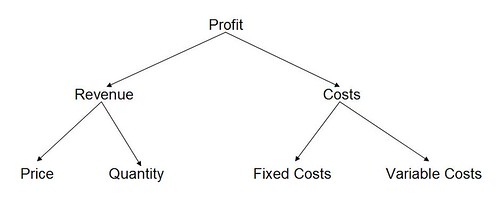This is part 1 of a 3 part series. The other parts can be found here: Part 1, Part 2, Part 3.
There’s a rumor that Jack Welch and his private equity partners might acquire The Boston Globe. When I heard this, I immediately thought of the following: if Welch bought it, how would he add value to the Globe and, consequently, how would he add value to the shareholders?
Given his background, I’m willing to bet that his worldview and approach to bringing value to the Globe’s shareholders will be informed by his background in Six Sigma, Lean, and Process Improvement. Jack would probably look at the metrics that drive the top-line and what the cost structure looks like. Then he would implement an effort that will improve those metrics and subsequently increase revenues and drive down costs. Pretty basic turnaround stuff, I know; but, I think his approach will be to use the tools of Lean and Six Sigma to really drive growth and bring down costs.
This is all speculation, of course; there is no bid on The Boston Globe and the deal may not go through. But, it’s fun and interesting to see how one might turn the Boston Globe around. Also, this article is not an exposition on Lean or Six Sigma, but some of the tools will be employed to show how one might turnaround the Globe’s operations.
Apparently, the Boston Globe’s revenues are not well; according to PaidContent.org:
The Globe has been a poor financial performer, even by the standards of big-city dailies. Sunday circulation has plunged 25 percent since the Globe’s acquisition by the New York Times, according to the paper’s account. Advertising revenue at the paper’s New England Media Group is down 10 percent as of September.
Someone like Jack with a root cause worldview, might ask: what is driving down circulation? To begin answering this question, it’ll help to first understand, generally, the (Cost/Revenue) framework we call the profit tree.

The model above is simple, yet powerful. Simply, when (R > C), the firm is profitable. For a newspaper, we can use the general Profit Tree model; more appropriate, however, is the more specialized Newspaper Boy model to show what drives the top-line. Revenues are driven by the following:

Before explaining the Newspaper (Cost/Revenue) model above, first some definitions: Circulation is defined as the number of atomic copies the firm distributes on an average day. Readership is a similar metric, but that number will be slightly higher than the Circulation numbers, because there’s an assumption that a copy will be read by more than one person (think of a newspaper left in the bathroom or in the lobby of your office).
Now, explaining the tree above, circulation and # of inventory spots drive the Ad Rates; Ad Rates and the number, size, and placement of ads drive revenues. When Revenues are greater than Costs, the firm is profitable.
In the next part of this series, we’ll look at how Jack might approach increasing the top-line.
Note: I concede that Jack is not known for his love or good treatment of people and employees. Yes, I concede — hands down. But, his business acumen is top-notch.









No responses / comments so far.